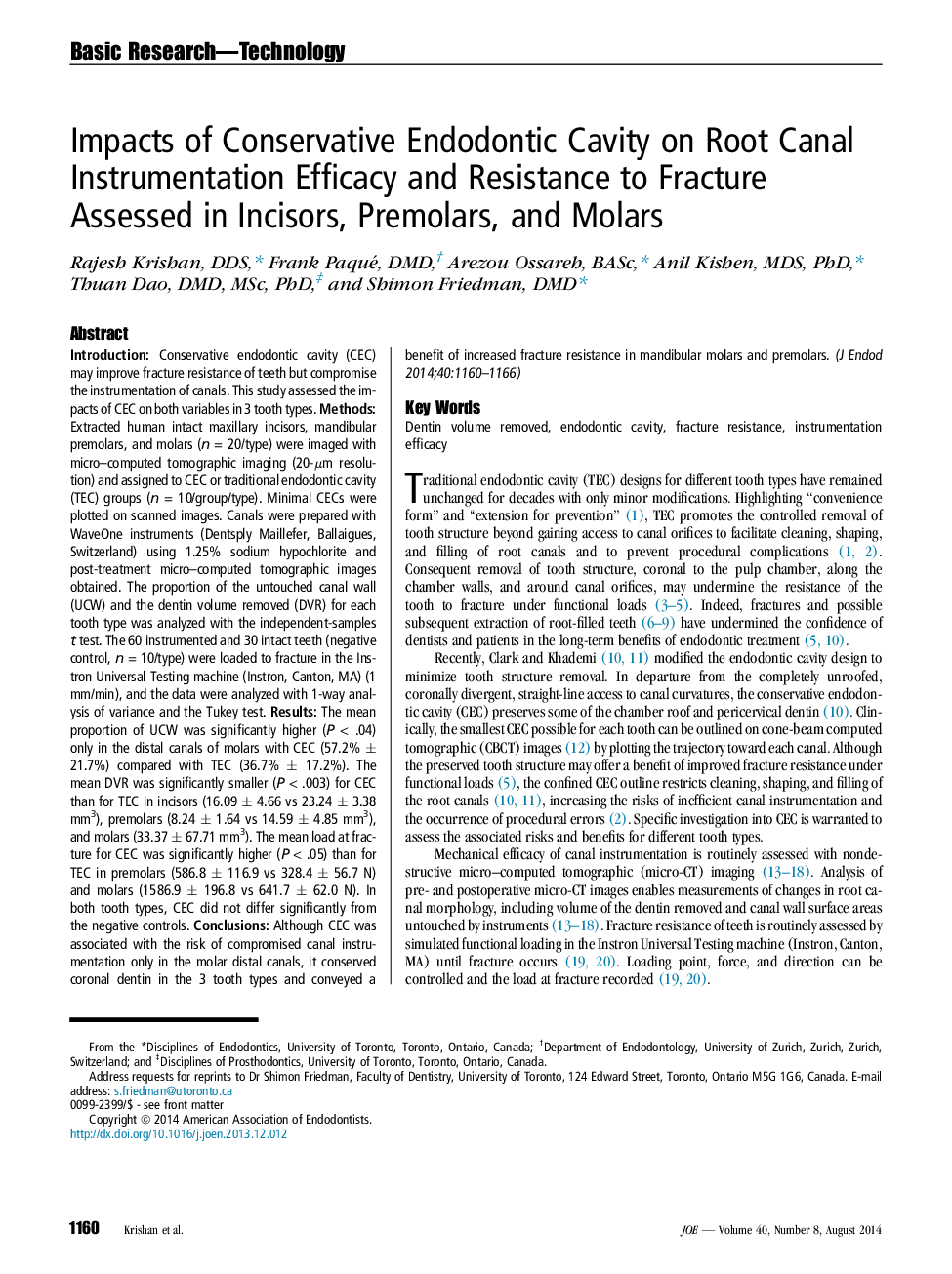| کد مقاله | کد نشریه | سال انتشار | مقاله انگلیسی | نسخه تمام متن |
|---|---|---|---|---|
| 3146742 | 1197315 | 2014 | 7 صفحه PDF | دانلود رایگان |
IntroductionConservative endodontic cavity (CEC) may improve fracture resistance of teeth but compromise the instrumentation of canals. This study assessed the impacts of CEC on both variables in 3 tooth types.MethodsExtracted human intact maxillary incisors, mandibular premolars, and molars (n = 20/type) were imaged with micro–computed tomographic imaging (20-μm resolution) and assigned to CEC or traditional endodontic cavity (TEC) groups (n = 10/group/type). Minimal CECs were plotted on scanned images. Canals were prepared with WaveOne instruments (Dentsply Maillefer, Ballaigues, Switzerland) using 1.25% sodium hypochlorite and post-treatment micro–computed tomographic images obtained. The proportion of the untouched canal wall (UCW) and the dentin volume removed (DVR) for each tooth type was analyzed with the independent-samples t test. The 60 instrumented and 30 intact teeth (negative control, n = 10/type) were loaded to fracture in the Instron Universal Testing machine (Instron, Canton, MA) (1 mm/min), and the data were analyzed with 1-way analysis of variance and the Tukey test.ResultsThe mean proportion of UCW was significantly higher (P < .04) only in the distal canals of molars with CEC (57.2% ± 21.7%) compared with TEC (36.7% ± 17.2%). The mean DVR was significantly smaller (P < .003) for CEC than for TEC in incisors (16.09 ± 4.66 vs 23.24 ± 3.38 mm3), premolars (8.24 ± 1.64 vs 14.59 ± 4.85 mm3), and molars (33.37 ± 67.71 mm3). The mean load at fracture for CEC was significantly higher (P < .05) than for TEC in premolars (586.8 ± 116.9 vs 328.4 ± 56.7 N) and molars (1586.9 ± 196.8 vs 641.7 ± 62.0 N). In both tooth types, CEC did not differ significantly from the negative controls.ConclusionsAlthough CEC was associated with the risk of compromised canal instrumentation only in the molar distal canals, it conserved coronal dentin in the 3 tooth types and conveyed a benefit of increased fracture resistance in mandibular molars and premolars.
Journal: Journal of Endodontics - Volume 40, Issue 8, August 2014, Pages 1160–1166
